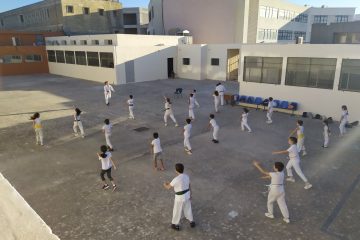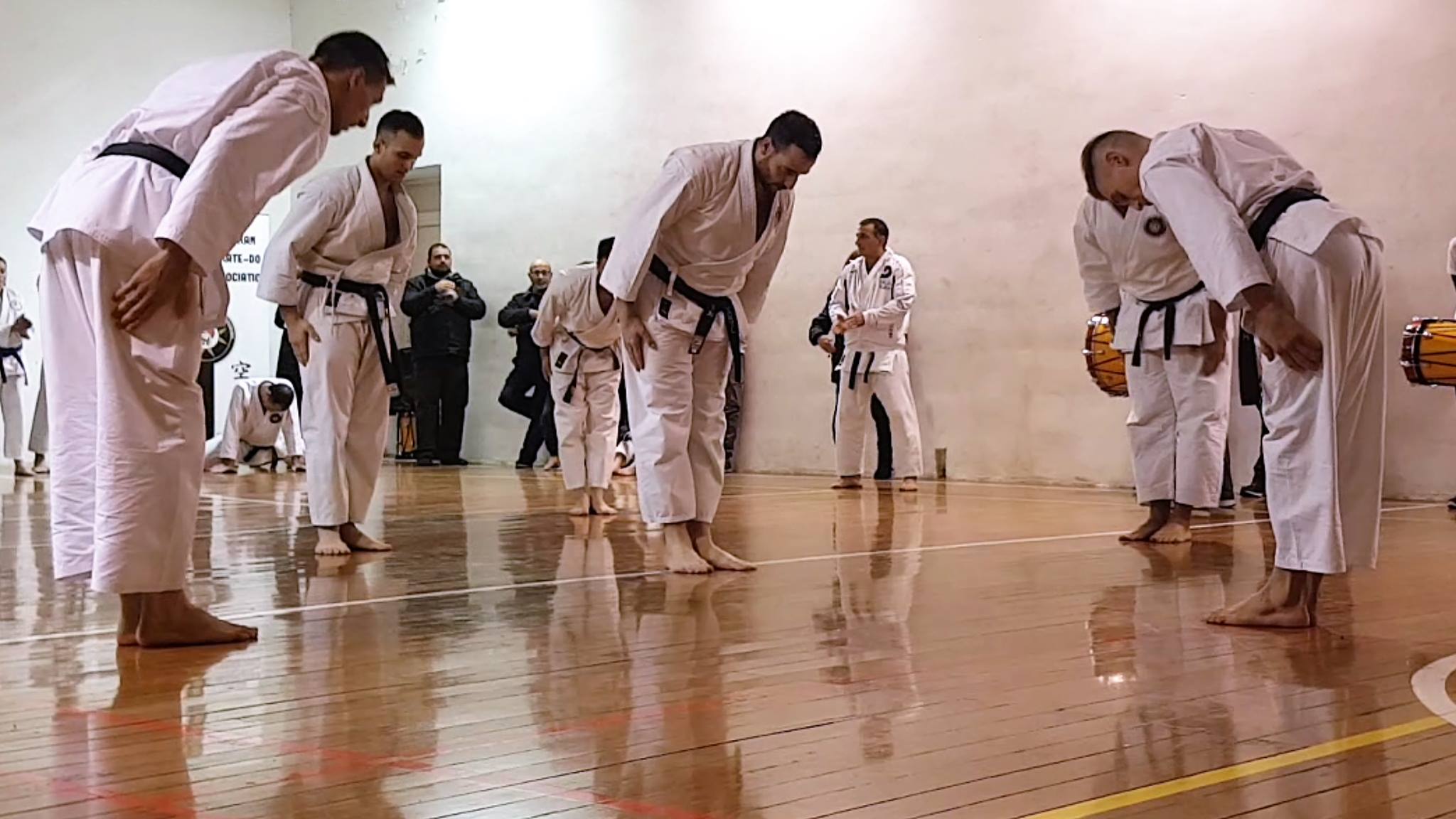How should I reduce Tension?
Proper execution of any Karate technique requires a holistic relaxation of body muscles, tensing on impact for only a split second. However to be able to relax a muscle during an activity, one has to first grasp the idea whilst not doing the activity since it needs to be ingrained in the mind for it to come naturally. Therefore I thought about writing this article to bring about more awareness and give some tips on how to relax a muscle.
The opposite of ‘relaxed’ is ‘tense’. Muscle tension is found & required in all muscles for the body to carry out movement. However when I refer to ‘tension’ in this article I will be referring to the ‘condition’ where a normal muscle (i.e. non-injured muscle) is kept semi-contracted for a period of time for no particular reason.
The following aspects that I shall be discussing are all vast and require in-depth evaluation. However I will be pointing out their relation to muscle tension.
- Breathing
- Conscious aspect of a muscle tension
- Stretching
- Massaging
Let’s start off with Breathing
Many a time when we hear about relaxation, we also hear about breathing and this is because correct breathing helps with muscular relaxation. I will first go through correct deep breathing technique.
A number of muscles take part in the process of breathing but the main muscles are the intercostal muscles (the muscles found around the ribs) and the diaphragm. The intercostal muscles work mostly to expand or retract the chest and therefore are dominant in ‘shallow breathing’. On the other hand the diaphragm is the muscle responsible for deep breathing. The diaphragm is a very important muscle especially to produce power. However that needs to be tackled in more depth.
So going back to the Diaphragm, as you can see in the pictures below, it had a dome shape and when it contracts it is flattened. When it is relaxed, it re-assumes its dome-shape.
  |
- Place one hand over your chest, and the other hand low on your stomach.
- Now take a deep breath in and check which hand moves more.
- Breathe out and check which hand moves more.
If your chest moves more than your stomach, then you are mostly doing shallow breathing. If your stomach moves more, then you’re on the right track for deep breathing. If your chest moved more than your stomach or you are simply lost then follow this:
Imagine your lungs are 2 balloons inside your chest. When you breathe in, they inflate. When you breathe out, they deflate. So keeping this in mind, let’s do another exercise.
While you are taking in air, think about pushing the incoming air deep inside the balloons and you should now feel that your stomach is being pushed out. What you feel is the diaphragm being pushed down and out to accommodate more air inside the lungs.
In reality we do not think or remind ourselves to breathe and this is because it (plus the movement of the intercostals and the diaphragm) is a natural process controlled automatically by the brain. However the muscles of breathing can also be controlled consciously. Otherwise we will not be able to hold our breath when we choose to!
So when you are thinking about relaxing a muscle, try to incorporate it with this type of breathing. That is, when you breathe out think about relieving all the tension from your muscles.
(Note: This type of breathing cannot be used whilst executing techniques during training because the body uses different patterns to be able to produce power).Now we’ll move to the ‘conscious’ aspect of relaxation.
Let’s start with some examples:- Shrug your shoulders as hard as you can and hold for 5 second then let go.
- Make a fist and squeeze it as hard as you can for 5 seconds and then let go.
- Clench your teeth together as hard as you can for 3 seconds then just let go. (if you have a problem with your teeth just skip this one.)
What you feel the minute you let go is what you should feel when your muscles are relaxed. In actual fact you do not ‘feel’ anything when your muscles are relaxed. The mind only perceives relaxation once you remove tension from a previously tense muscle (like when you go for a massage – you never expected it to be painful until you actually do it and that is because your mind never perceived the tension in your muscles since it is your normal/usual feeling’. But once removed, you have a feeling of relaxation).
Another example I like to use is a small test before sleeping. While lying in bed say to yourself to relax your muscles. If your shoulders & head sag down into the bed, then you were having extra tension in your shoulders and neck muscles.

All areas in the body can exhibit this extra tension, but mostly it is found in the neck & shoulder muscles and the lower back.
So every now and then remind yourself to relax your shoulders neck and hands, especially if you spend a lot of time reading, writing or using a pc.
Stretching:
Stretching is a very important tool that we can use to control and maintain proper muscle length, and reduce excessive muscle tension.
During stretching, the muscle is taken to its full (or almost full) length and therefore it automatically relaxes since it would be at a mechanical disadvantage for it to contract (muscle contraction is inhibited).

Just to give a small example, when one has a muscle injury it usually tightens up/ contracts automatically – called muscle spasm. At this point the muscle will have a drastic increase in its tension so much so that the body perceives it as pain. Initially it happens to protect itself, however later on it can lead to an unnecessary increase in muscle tension.
Whenever our muscle exhibits much more tension than needed (especially after injury) one will feel a bulge in the muscle or what we call ‘knots’ which are usually painful. These are best released with stretching and massage.
Massage:
Massaging is also a good way of reducing muscle tension. By massaging I refer to the application of pressure to the tense area or the whole muscle.

The continuous pressure applied inhibits the muscle from contracting, leading to automatic relaxation. This could be applied to a non-injured muscle to avoid extra tension from developing, and to a muscle which has a spasm to reduce pain and try to bring its tension back to normal. However with an injury it’s best to check it out since it could be more complicated than a simple muscle spasm.
(Note: Pressure should be increased gradually and not forcefully since it could lead to an increase in muscle tension)Conclusion:
It is important to be aware of our body and to try and maintain a balanced physique since “The technique must come from anywhere, and from any angle. This takes control. Karateka must aim to control every part of their body as a unit and separately. Relaxed, strong and flexible muscles are the key.” (Asai Sensei – 9th Dan, interviewed in December 2003& published on The Shotokan Way)
Article written by Ms Christina Desira, B.Sc (Hons) Physiotherapy, 3rd Dan Shotokan Karate – JKA, who is currently working in Primary Healthcare and deals mostly with musculoskeletal conditions.


